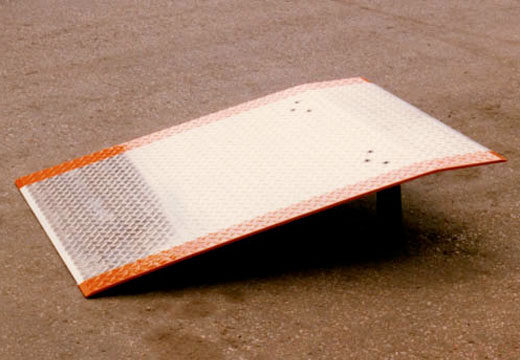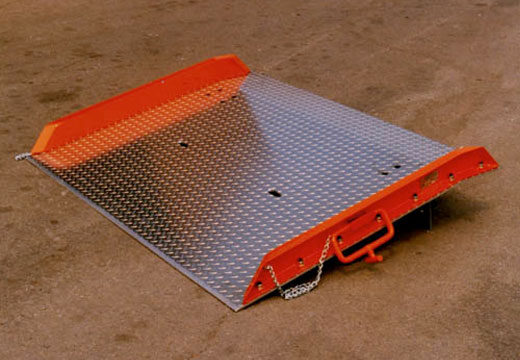Dock Boards and Plates
Dock Plates
-1.png?width=100&height=100&name=Untitled%20design%20(3)-1.png)
Downloads
Download the brochure
Overview
The goal of a dock plate is to bridge the gap between a trailer and the loading dock. This is the same general goal of a dock leveler, but that’s where the similarities end.
Dock plates are typically constructed of aluminum and designed to be portable, as opposed to permanent levelers. Due to their lightweight construction and portability, dock plates can only accommodate lighter loads, limited to pallet jacks, dollies, panel trucks, trolley carts and other non-powered loading applications.
In addition to portability, an important distinction between dock plates and dock levelers is the loading dock drop-off, or run-off, safety features. While featuring locking legs to prevent the plate from shifting out of place while in use is beneficial, the standard safety feature to prevent run-off on a dock plate is a suboptimal yellow border painted on the sides. This yellow border is a nice visual alert, but it lacks a physical barrier.
Dock Boards

Overview
While discussing dock plates, it’s important to discuss another piece of gap-bridging equipment that can be confused with dock plates or levelers - dock boards.
Similar to dock plates, dock boards are made to be portable. The biggest difference between the two, however, is the intended application. Dock plates are designed for lighter loads while dock boards are designed to handle the weight of heavy machinery, like forklifts.
Often made of steel, the functionality is similar to dock plates, but since its created for use with heavy-duty machinery, dock boards feature steel curbs on opposite sides and a steel chain to prevent loading dock run-off.
More Solutions For You
Check out similar products that could be the perfect fit for your unique needs.
Contact Us Today
Have a project in mind? Need a few more details? Fill out the form and we will get back to you as soon as we can.
